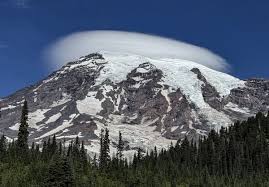
Breaking News
 U.S./NATO POLITICIANS: WAR IS A PROFITABLE RACKET! PEACE IS A DIRTY CRIME
U.S./NATO POLITICIANS: WAR IS A PROFITABLE RACKET! PEACE IS A DIRTY CRIME
 MARA Holdings Nears 50K Bitcoin Treasury Milestone
MARA Holdings Nears 50K Bitcoin Treasury Milestone
 Final Summer Solar Panel Test: Bifacial Optimization. Save Money w/ These Results!
Final Summer Solar Panel Test: Bifacial Optimization. Save Money w/ These Results!
Top Tech News
 Insulator Becomes Conducting Semiconductor And Could Make Superelastic Silicone Solar Panels
Insulator Becomes Conducting Semiconductor And Could Make Superelastic Silicone Solar Panels
 Slate Truck's Under $20,000 Price Tag Just Became A Political Casualty
Slate Truck's Under $20,000 Price Tag Just Became A Political Casualty
 Wisdom Teeth Contain Unique Stem Cell That Can Form Cartilage, Neurons, and Heart Tissue
Wisdom Teeth Contain Unique Stem Cell That Can Form Cartilage, Neurons, and Heart Tissue
 Hay fever breakthrough: 'Molecular shield' blocks allergy trigger at the site
Hay fever breakthrough: 'Molecular shield' blocks allergy trigger at the site
 AI Getting Better at Medical Diagnosis
AI Getting Better at Medical Diagnosis
 Tesla Starting Integration of XAI Grok With Cars in Week or So
Tesla Starting Integration of XAI Grok With Cars in Week or So
 Bifacial Solar Panels: Everything You NEED to Know Before You Buy
Bifacial Solar Panels: Everything You NEED to Know Before You Buy
 INVASION of the TOXIC FOOD DYES:
INVASION of the TOXIC FOOD DYES:
 Let's Test a Mr Robot Attack on the New Thunderbird for Mobile
Let's Test a Mr Robot Attack on the New Thunderbird for Mobile
 Facial Recognition - Another Expanding Wolf in Sheep's Clothing Technology
Facial Recognition - Another Expanding Wolf in Sheep's Clothing Technology
Hundreds of earthquakes rattle catastrophic volcano sparking fears of an eruption

The US Geological Survey (USGS) revealed in a post on X that the earthquake swarm kicked off at 4:29am ET, with none of the tremors surpassing 1.7 in magnitude.
All of the tiny earthquakes took place between 1.2 and 3.7 miles below Mount Rainier's summit, a generally shallow depth for a quake.
A map released by USGS Tuesday revealed that the new swarm adds to the hundreds, and possibly thousands, of earthquakes recorded at Mount Rainier since 2020.
However, USGS did note that this was the largest swarm in the area since 2009.
Despite the increased seismic activity, officials said that there was no cause for alarm. The volcano's alert level was left at 'normal' following the tremors.
The USGS Cascades Volcano Observatory (CVO) added: 'Instruments do not show any detectable ground deformation at the volcano, and no anomalous signals have been seen on the infrasound monitoring stations.'
Although an eruption doesn't seem imminent, Mount Rainier remains one of the most active volcanos in the Pacific Northwest's Cascade Range, and a devastating eruption remains a real possibility in the near future.
Experts consider it to have a very high threat during an eruption due to its volcanic mudflows known as lahars, ash fall, and pyroclastic flows.
Experts say it is only a matter of time until Mount Rainier unleashes itself upon the Pacific Northwest.
This huge, active stratovolcano looms over nearly 90,000 people living in cities such as Seattle, Tacoma, and Yakima in Washington as well as Portland, Oregon.
Even though Mount Rainier has not produced a significant eruption in more than 1,000 years, experts keep a very close eye on it due to its potential to blow at any time, and the widespread destruction such an event would cause.
Jess Phoenix, a volcanologist and ambassador for the Union of Concerned Scientists previously told CNN: 'Mount Rainier keeps me up at night because it poses such a great threat to the surrounding communities.'
When this volcano eventually blows, it won't be lava flows or choking clouds of ash that threaten surrounding cities, but the lahars: violent, fast-moving mudflows that can tear across entire communities in a matter of minutes.
Large lahars can crush, abrade, bury, or carry away almost anything in their paths, according to the US Geological Survey (USGS).

 The Plot to Get RFK
The Plot to Get RFK

